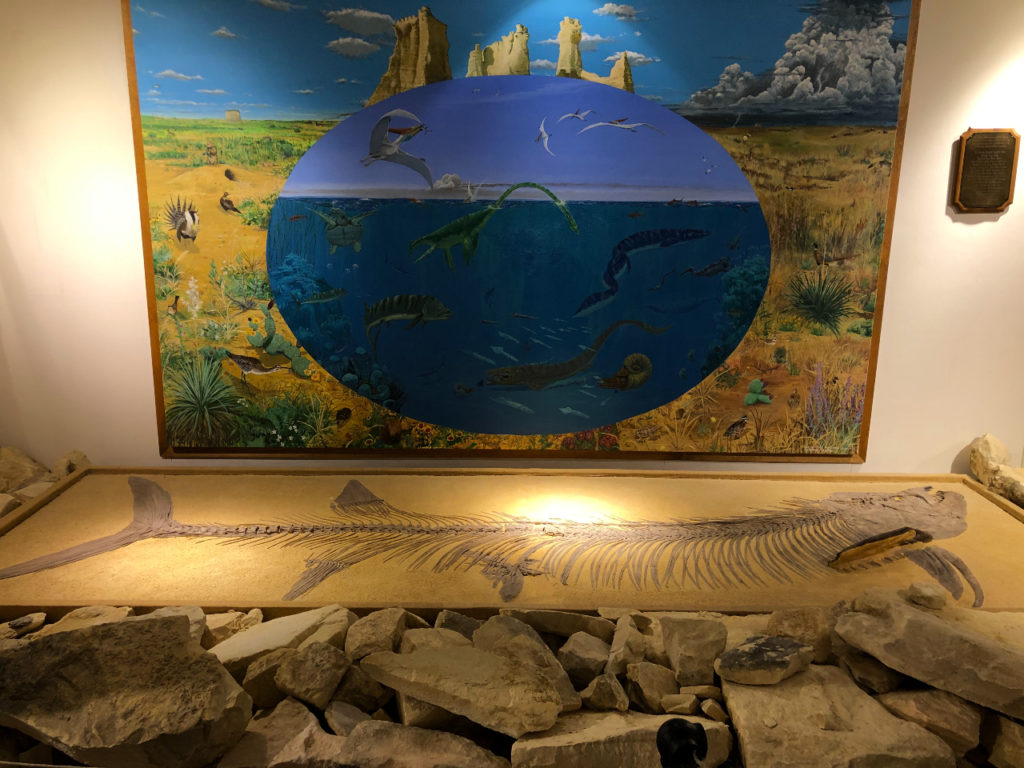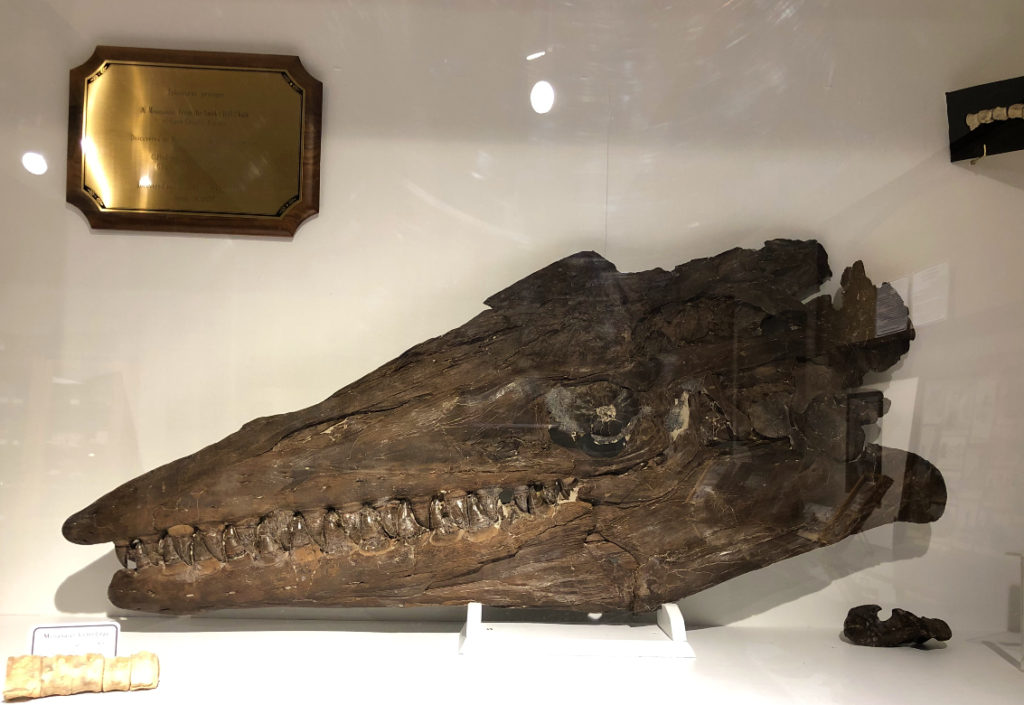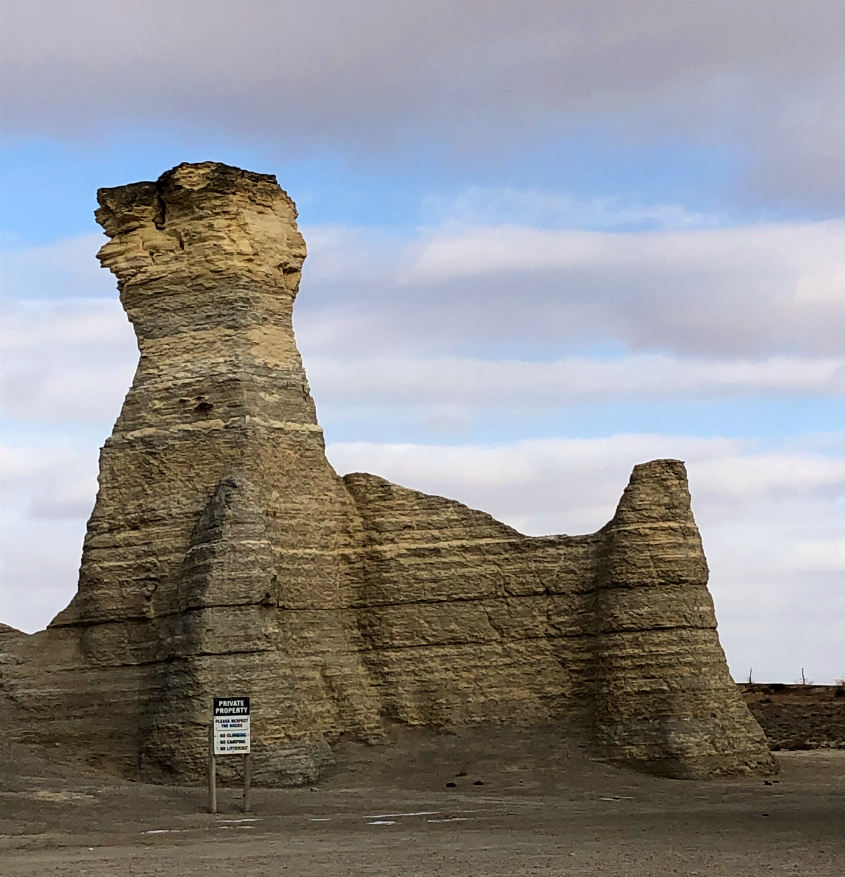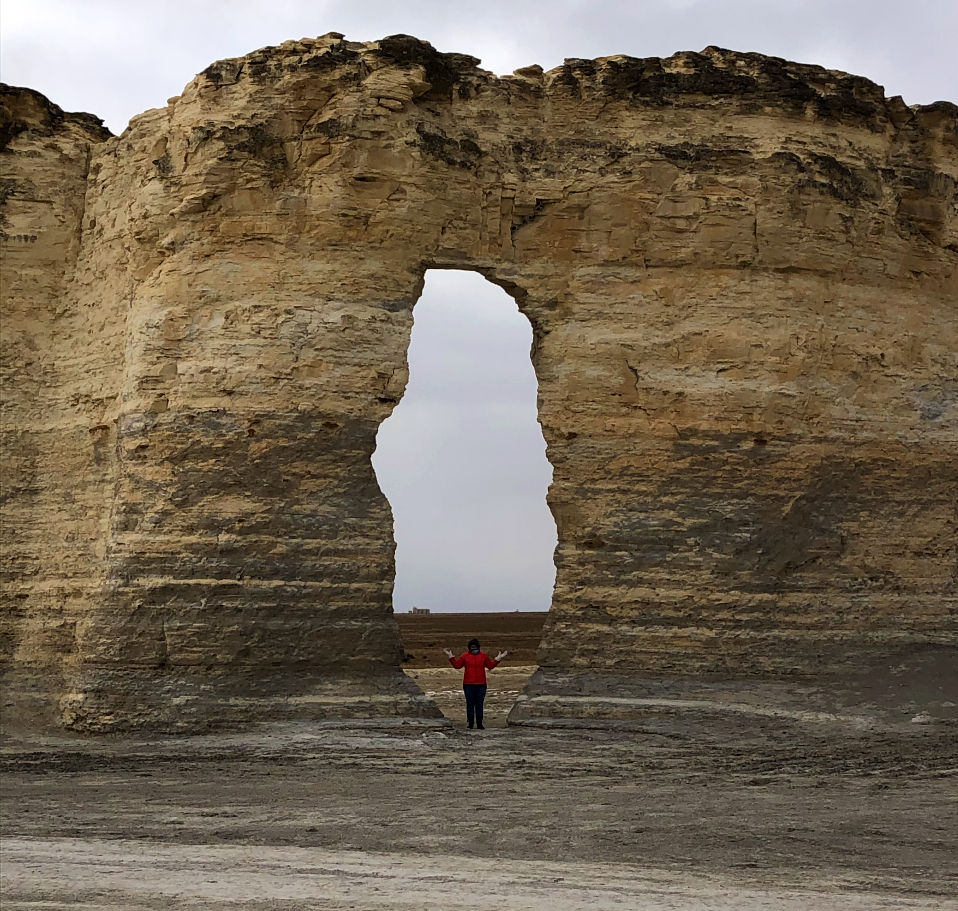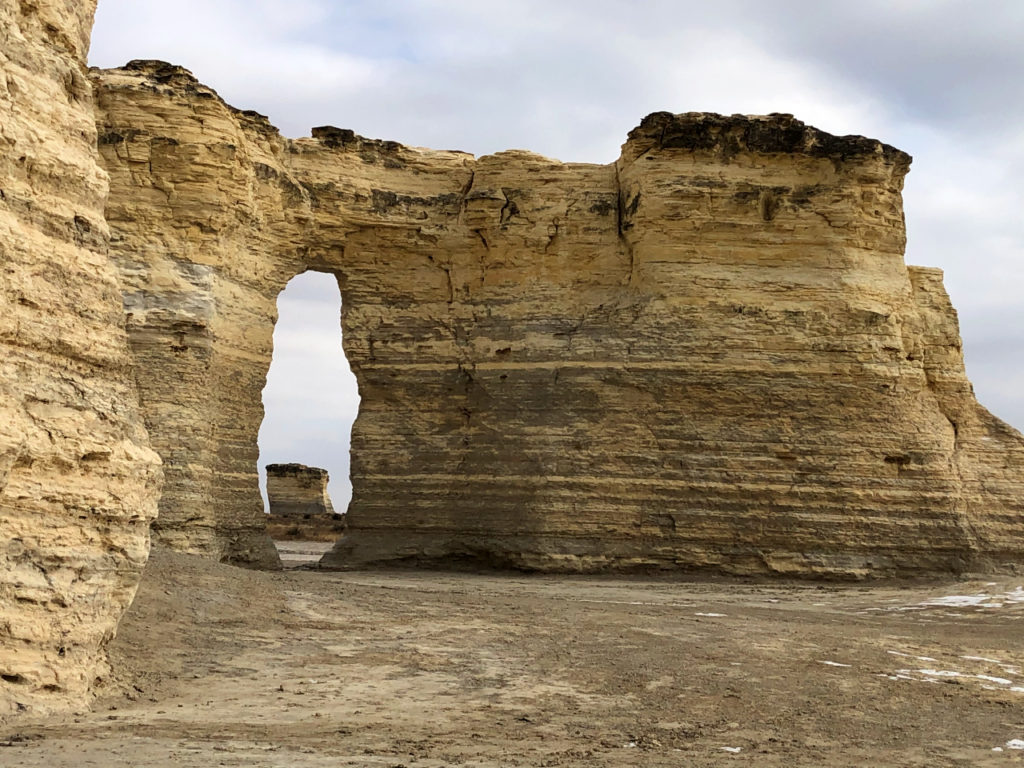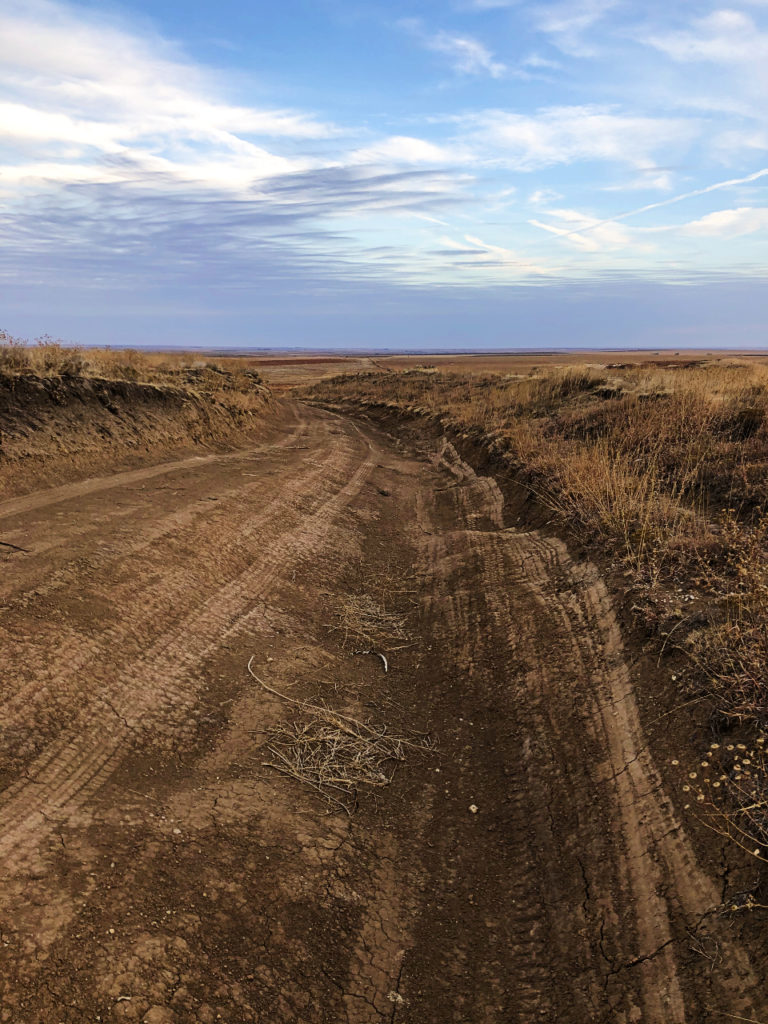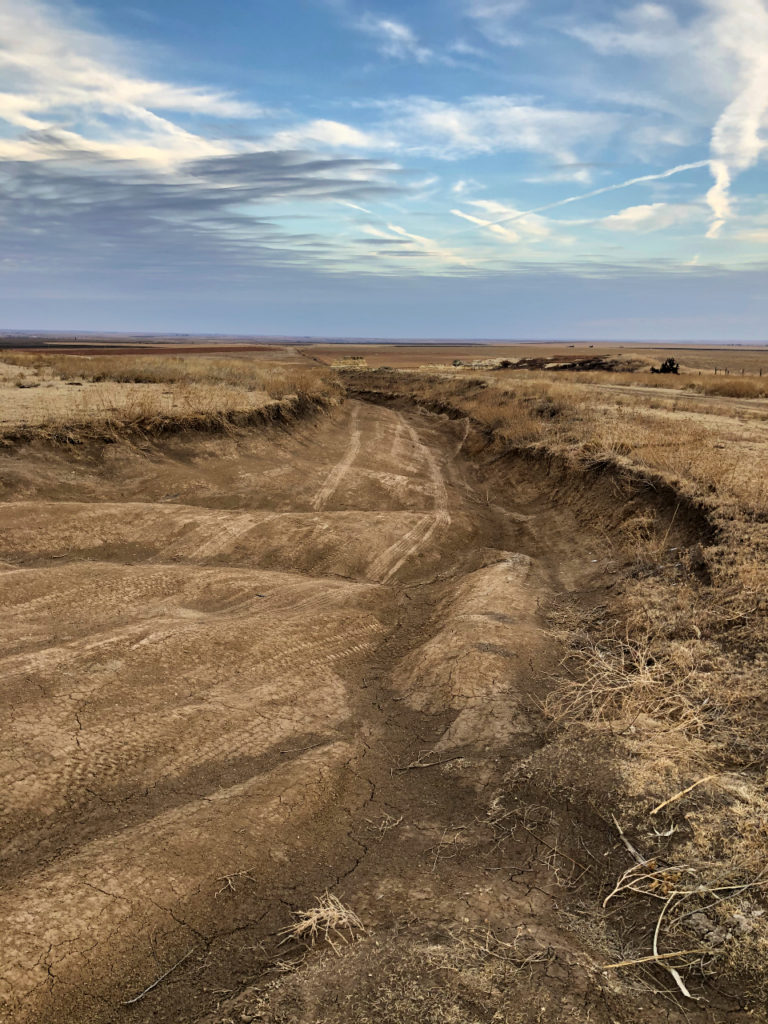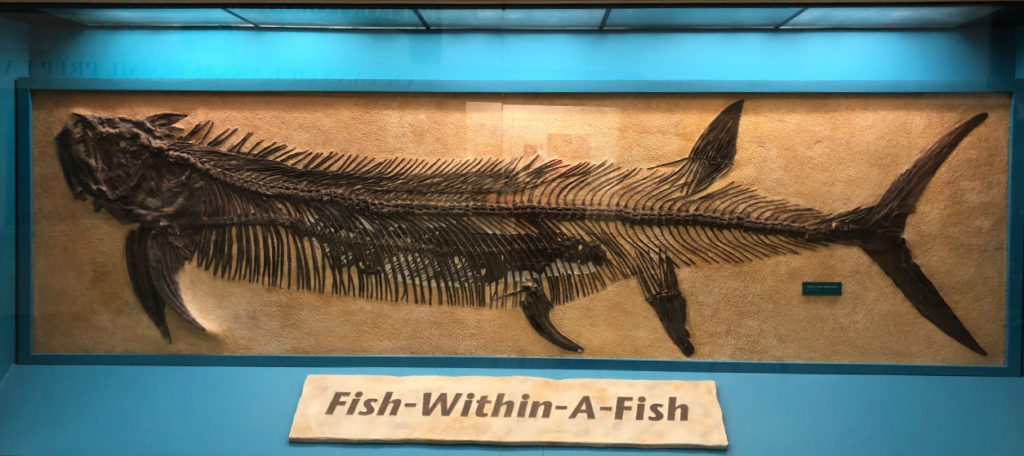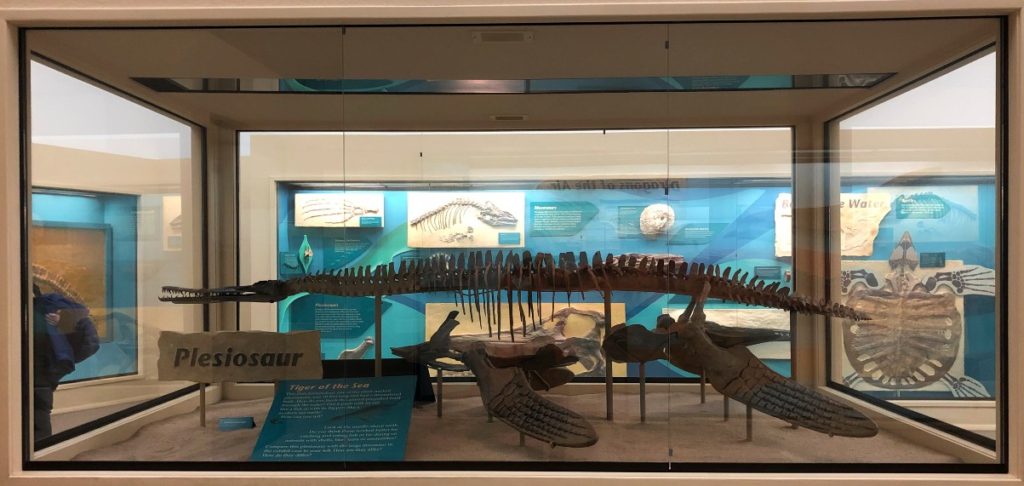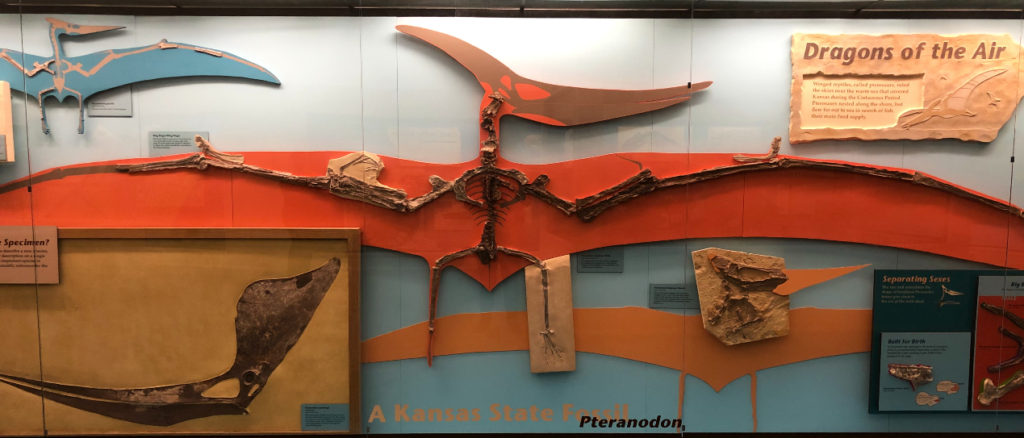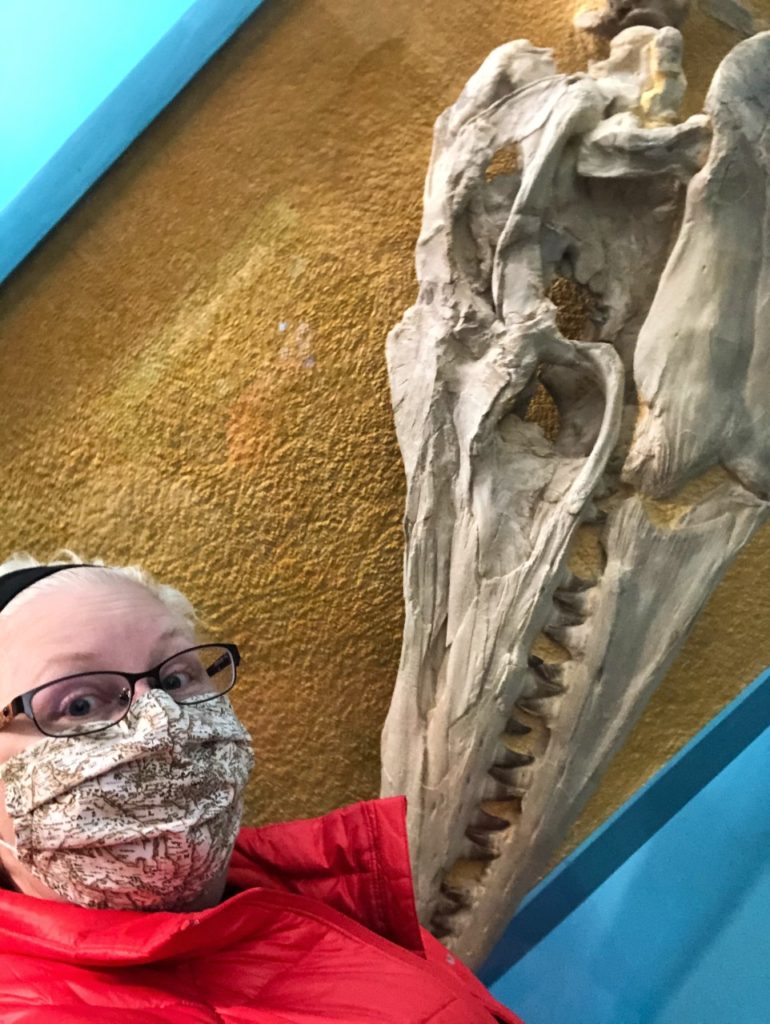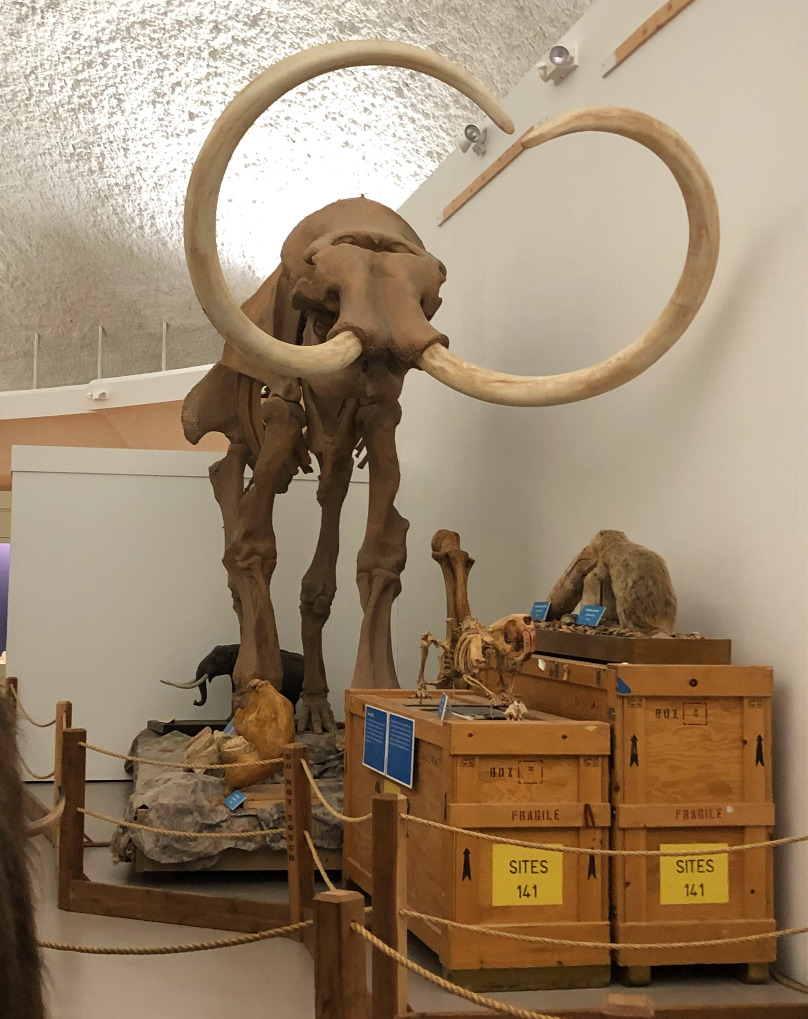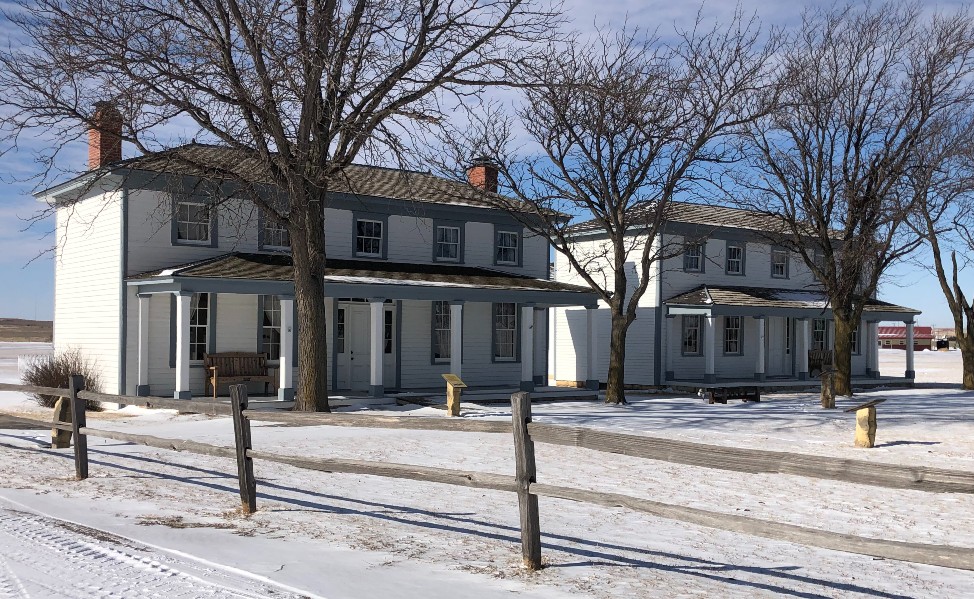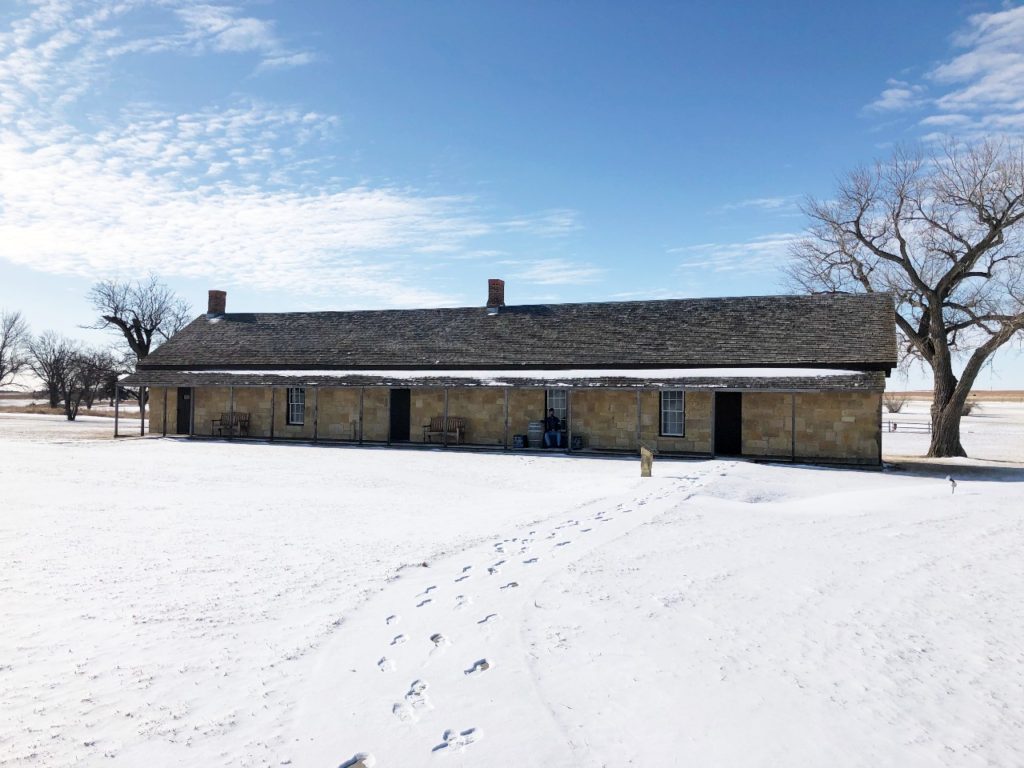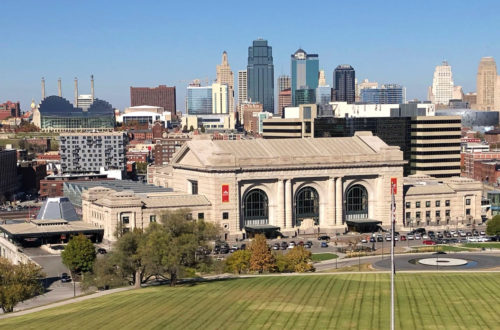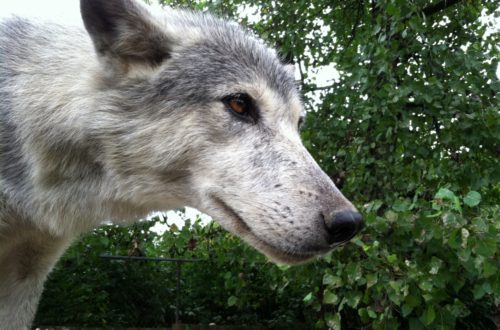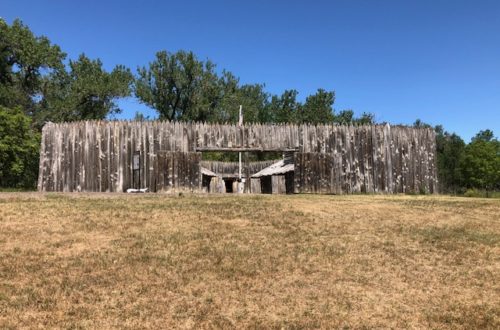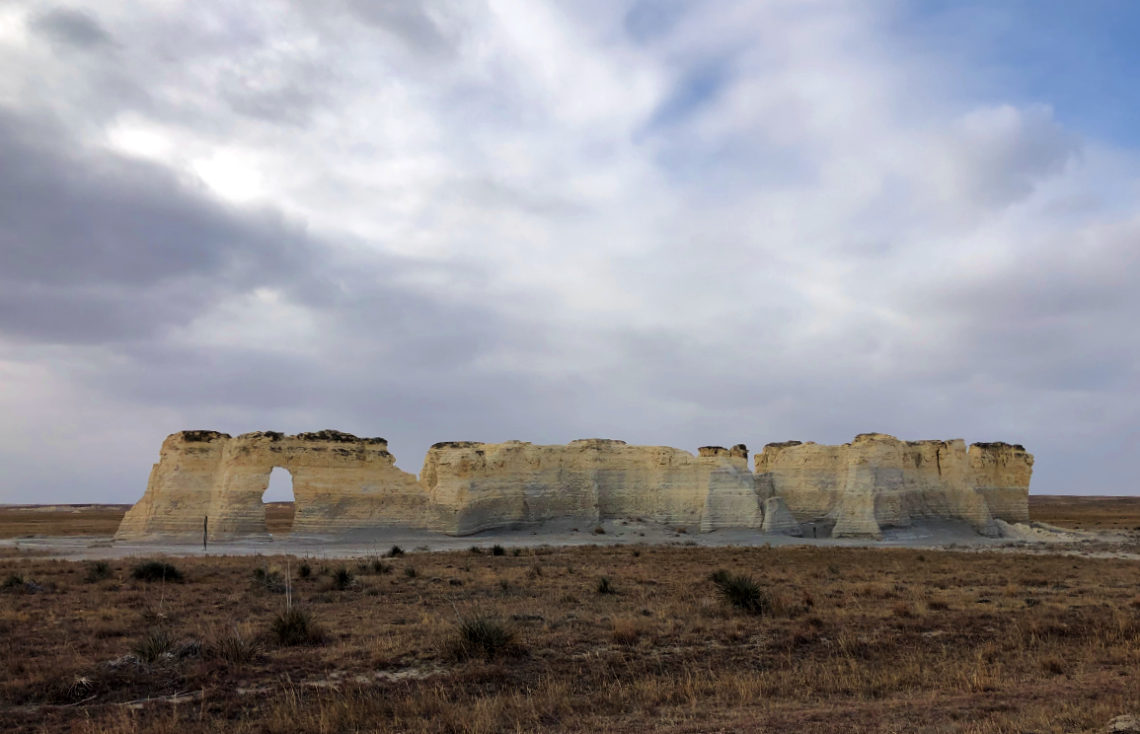
Wild West Kansas Sisadventure 2.0
When I agreed to go on this road trip with my sister on our long President’s Day weekend, I had no idea what I was getting myself into! All I knew is that we were going out to the middle of nowhere in western Kansas to look at rocks. She teaches science, so it is her thing. I am always down to travel, so when she asked me to go, I of course said yes. I knew we would find some historic stops along the way, because as you know, that’s my thing! We found a few historic sites that I am excited to share with you!
Getting there
When we first started planning this trip, we were going to take her Tesla Model 3 and car camp one night again like we did on our last road trip (you can read about it here), but she insisted that we needed to rent a four wheel drive or some sort of high clearance vehicle for one of her rock stops, and apparently there are no car rental locations in Hays, Kansas (or anywhere else around there for that matter) open on Saturday for pick up.
So, we ended up renting a 4-wheel drive in Kansas City and getting a hotel for all three nights. And THANK GOD we did! With record low temperatures that weekend, I would not have wanted to be in the car camping regardless of whether or not we had climate control haha. The “feels like” temperature was -17 as I was typing this! Plus her dog, Alfredo was coming with us and there just isn’t room in her car for two adults and a dog.
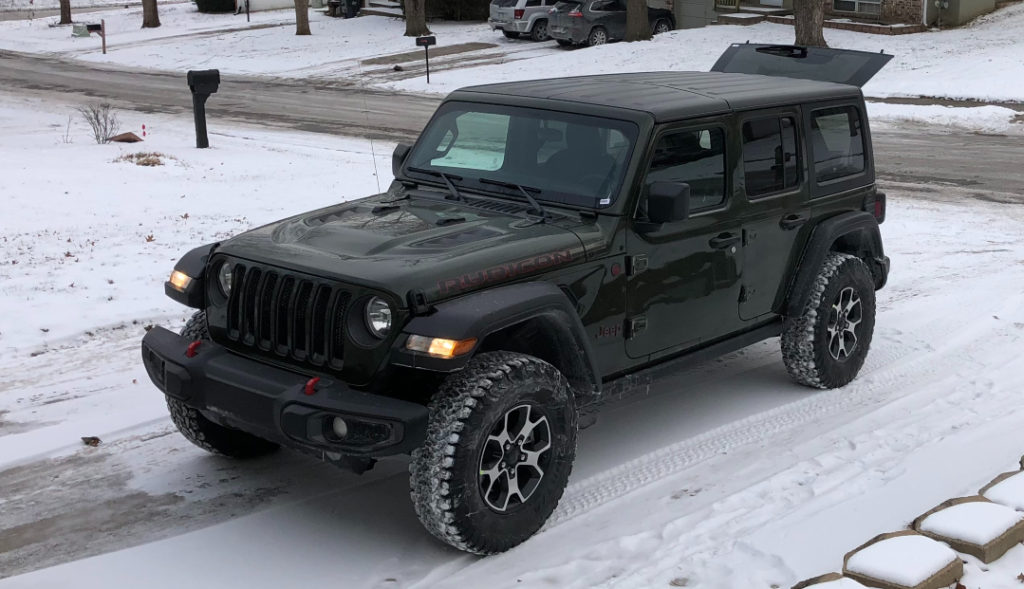
We picked up the rental, a Jeep Rubicon, on Friday afternoon, and headed west. As a travel agent, I got a great rate on the rental. And, since I would be doing all of the driving, she would be the one to pump gas! Bonus for me. This is especially humorous if you know how much grief my sister gives us all about having to buy gas still since her car is electric. I took a picture of her at the gas pump each time we stopped for gas haha!

We drove a little over four hours to Hays, Kansas, which would be our base for the weekend, and got a pet friendly room at the Hilton Garden Inn, which just opened in 2020. All was great at the hotel until we got up Saturday morning to leave and the door to the room wouldn’t shut. Well, it would shut, but it wouldn’t latch, so you could just push it open – no key necessary.
The guy at the front desk tried to help, but only added to the fiasco. Apparently this Hilton does not have maintenance on site, and “it would be a while” before they could get the door fixed. So, he came up to work on it himself, which resulted in us getting locked IN the room and unable to get out for several moments. And that was the last straw, haha. We packed up all of our stuff, put it back in the Jeep, told him to call us and let us know when it was fixed, and started our day – better late than never!
Oakley, Kansas
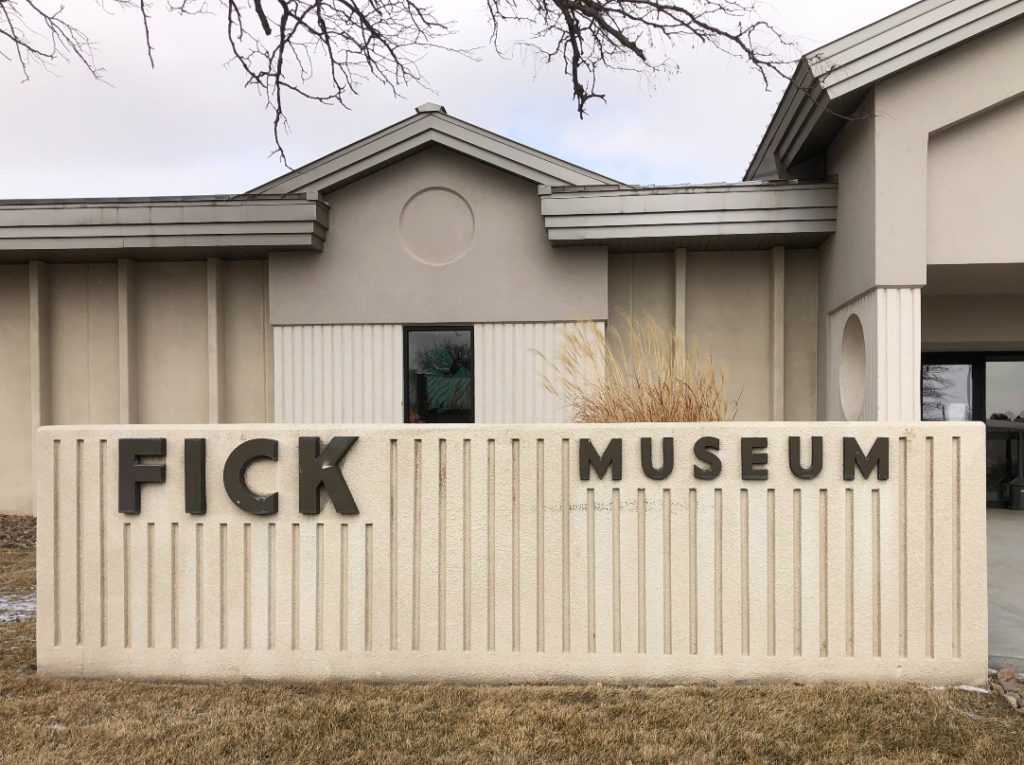
Our first stop for the day was the Fick Fossil Museum in Oakley (an hour drive from Hays and closes at 2:00 on Saturdays). We didn’t end up escaping the hotel room until 12:15, so we had to book it to the museum. It was an easy drive, a straight shot down I-70. True to its name, the Fick Fossil Museum had a lot of fossils including one large Xiphactinus audax skeleton, a mosasaur skull, mammoth bones, and a mastodon tusk.
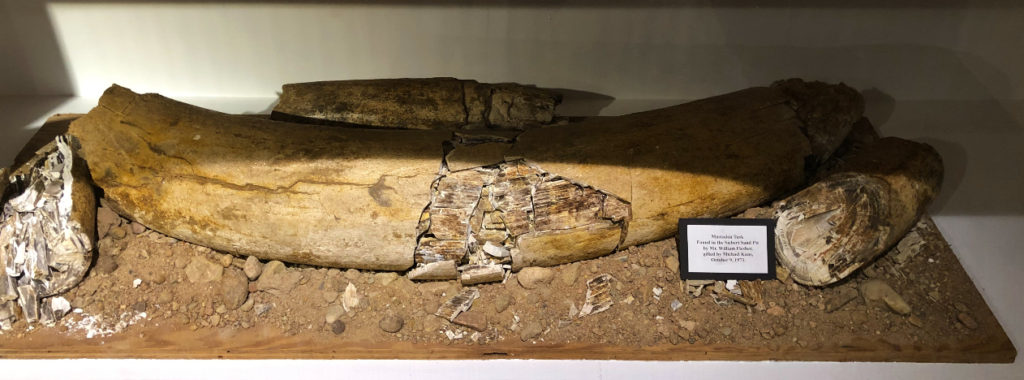
Though small in size, the museum is quite impressive and more than just fossils. They have displays related to the telegraph, trains, military uniforms, a creamery, general store, farm wagon, old pianos, an old fire truck, and even a sod house (think Laura Ingalls Wilder)! Hundreds of old photographs of the town of Oakley and other surrounding towns are on display along with a few family narratives. The museum also showcases the art of its co-founder Vi Fick, who used local fossils she found in her art.
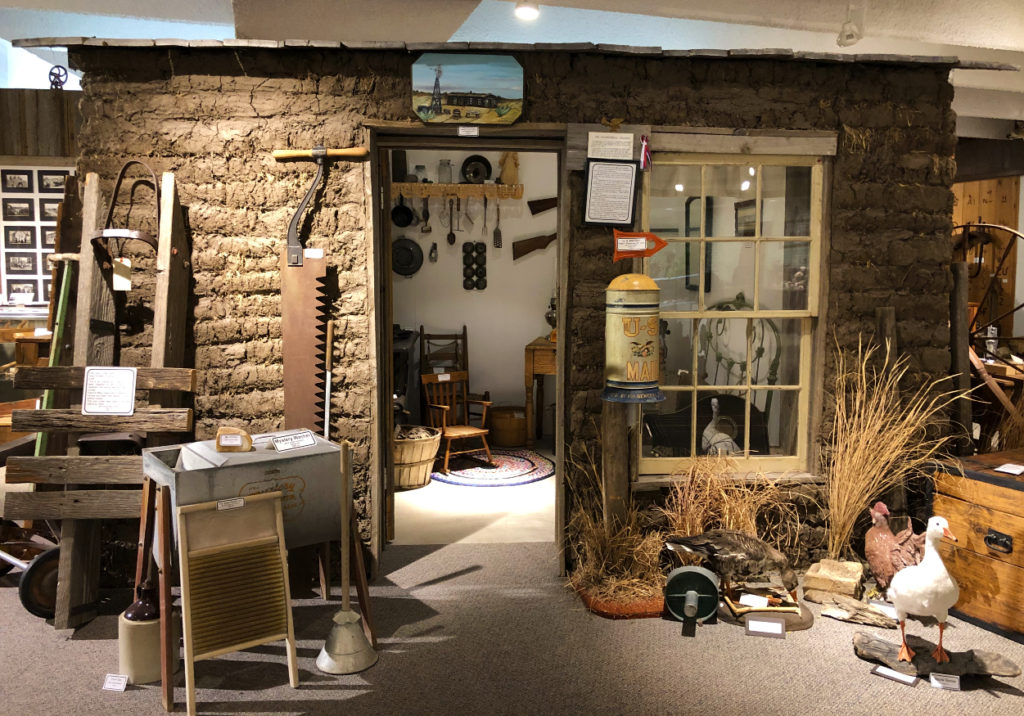
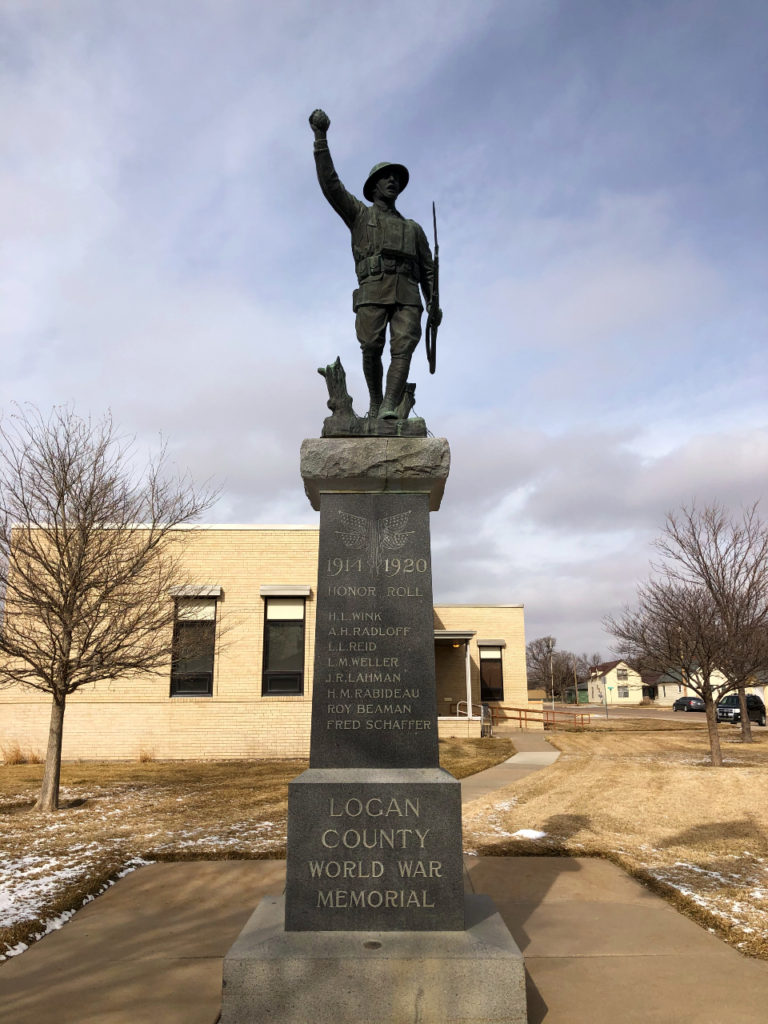
The town of Oakley has a “Spirit of the American Doughboy” statue in its city park to honor Logan County Kansas’s World War I casualties. World War I actually ended in 1918, however, so it is interesting that the dates on the statue are 1914-1920.
Also in Oakley, is the Buffalo Bill Cultural Center. Out front is a statue of Buffalo Bill shooting a Buffalo, and inside is really a visitor center for the surrounding area including a gift shop, a few small displays, and tons of literature on things to do. It is a great place to stop for a clean restroom as well!
So, the story of Buffalo Bill goes something like this…Bill Cody (Buffalo Bill) had to win a buffalo hunting competition in order to keep the nickname Buffalo Bill, as there was another Bill in the area who also desired the name. They held a competition that people traveled far and wide to spectate, and Bill Cody out shot the other Bill, killing over 60 buffalo, to retain the name Buffalo Bill. The competition is said to have taken place near Oakley.
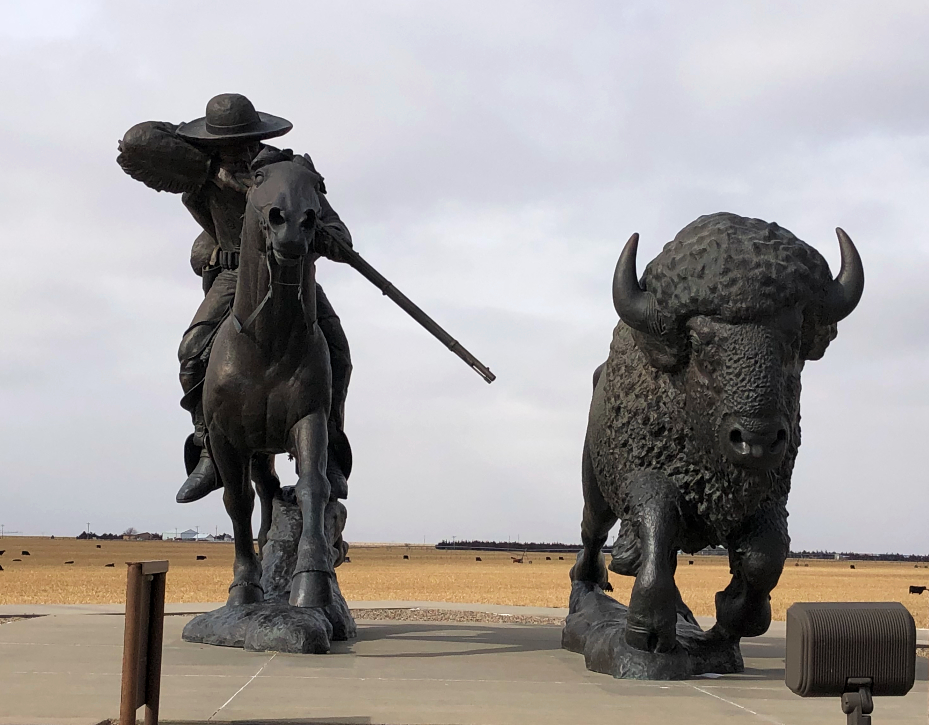
Monument Rocks
After a picnic lunch inside the car (it was 7 degrees out), we headed south toward Monument Rocks, also known as the Chalk Pyramids. I was not too excited about this, because it is literally in the middle of nowhere, but the formations were very impressive once we finally arrived. The last 7 miles of the drive to Monument Rocks is on a gravel road, but I had no idea what was in store for the rest of the day. We wouldn’t leave the gravel (except for dirt) until we got back on I-70 hours later!
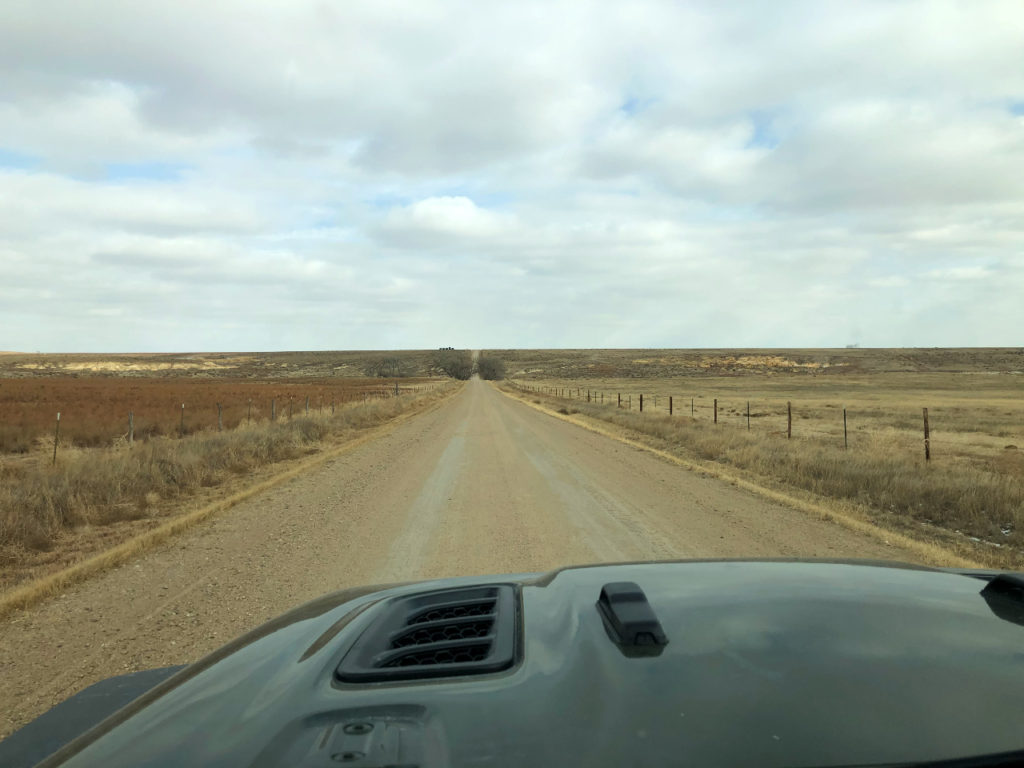
So what is the history beyond Monument Rocks? Well, the middle of the United States from the Gulf of Mexico north to the Arctic, was once the Western Interior Seaway during the late Cretaceous period (66-108 million years ago). The rock spires at Monument Rocks were formed by erosion after the Rocky Mountains were formed and the Western Interior Seaway drained. Numerous sea life fossils have been and continue to be recovered from this area.
The rock formations themselves really are riveting, but unfortunately there were wind chill advisories in effect and the “feel like” temperature was -16 degrees while we were there, so no hiking around for us. We were able to drive around the larger grouping, and got some pictures of the arch. You can also still see fossils in some of the formations.
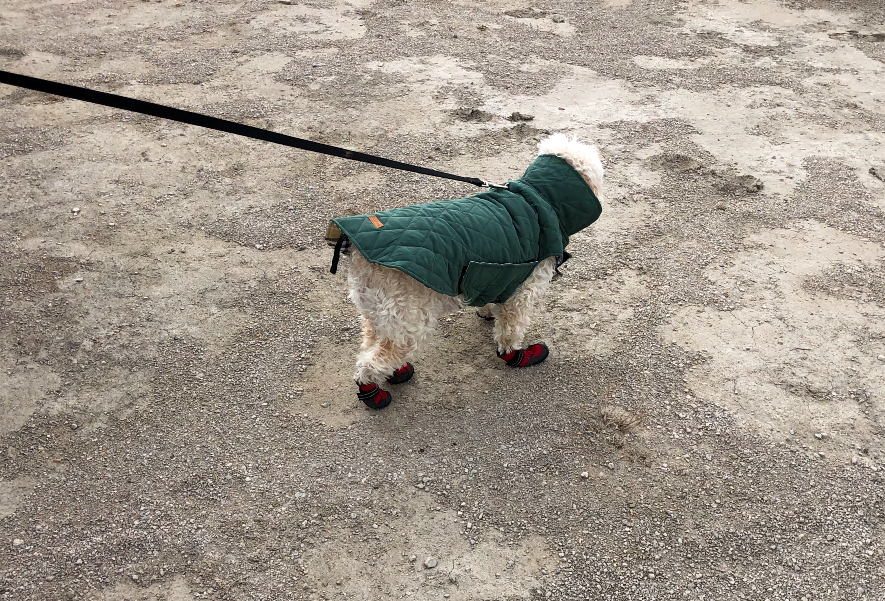
Castle Rock & the Kansas Badlands
From Monument Rocks we drove an hour to Castle Rock. This was all back road gravel roads, so just be aware if you decide to head out there. Once we finally made it, we had to navigate a crazy little dirt road full of ruts to get down to the rock. My sister kept saying, “And this is the good road.” I thought she was just being dramatic. She. Was. Not. Castle Rock was cool but not as impressive as Monument. Castle Rock was a landmark for the Butterfield Overland Stage Line after the Civil War.
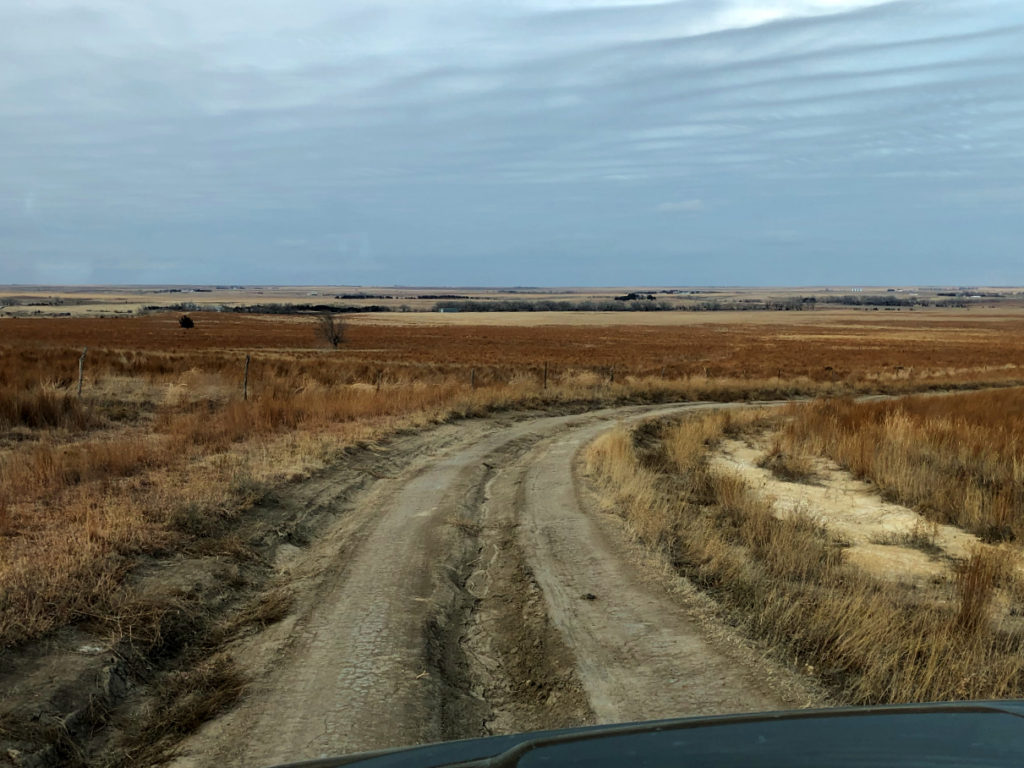
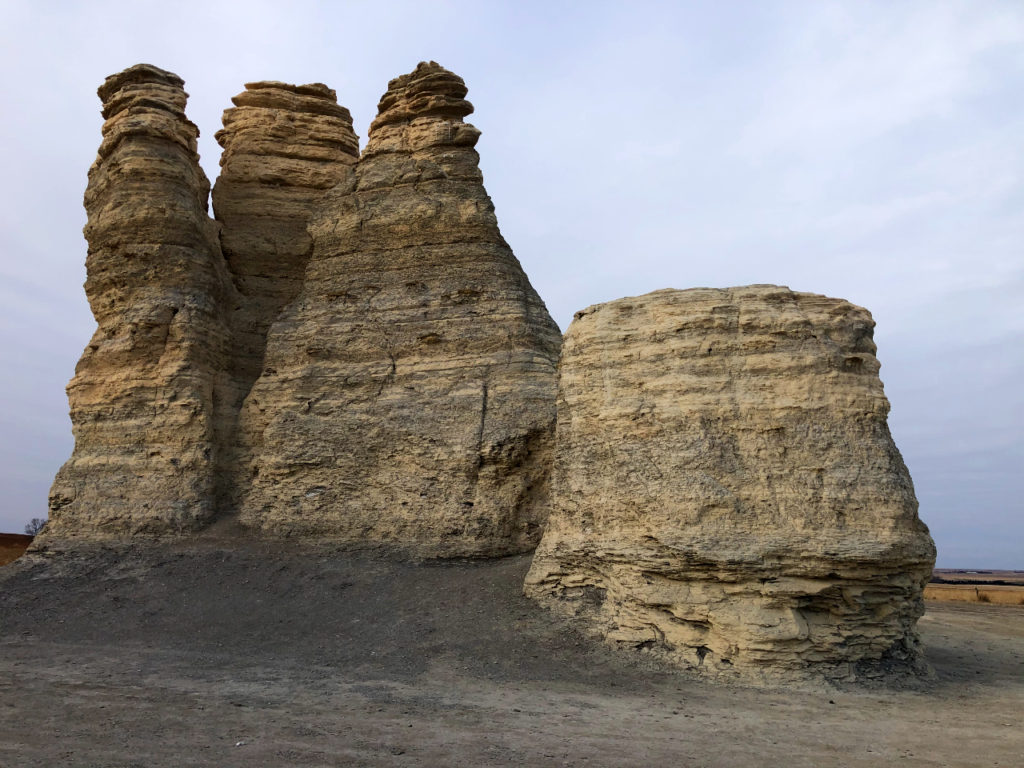
From Castle Rock, we had two options, turn around and go out the way we came, or continue the loop through “the Badlands” not to be confused with the National Park in South Dakota. These badlands are smaller, but really pretty nonetheless. My sister wanted to drive through them, so off we went. The drive started off easy enough, and we were thoroughly enjoying the scenery. Initially, tall prairie grass grew on both sides of the road, which was narrow and barely wide enough for the vehicle. The rock formations we saw were awe inspiring as well. We did lose our GPS signal momentarily, but not for long.
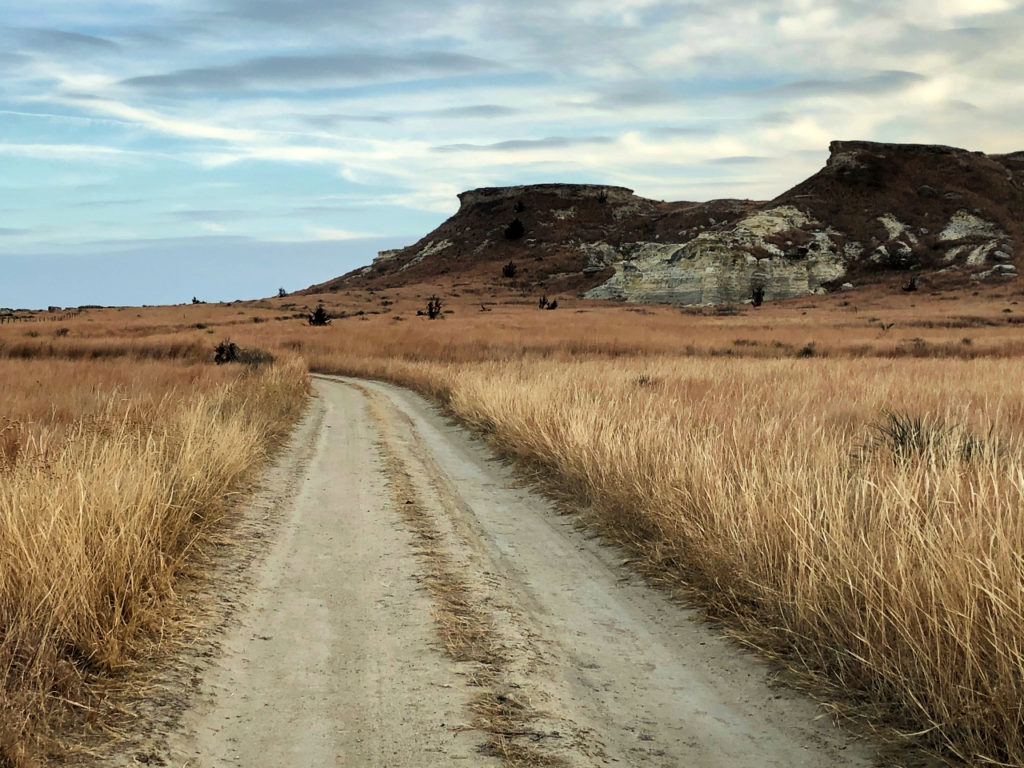
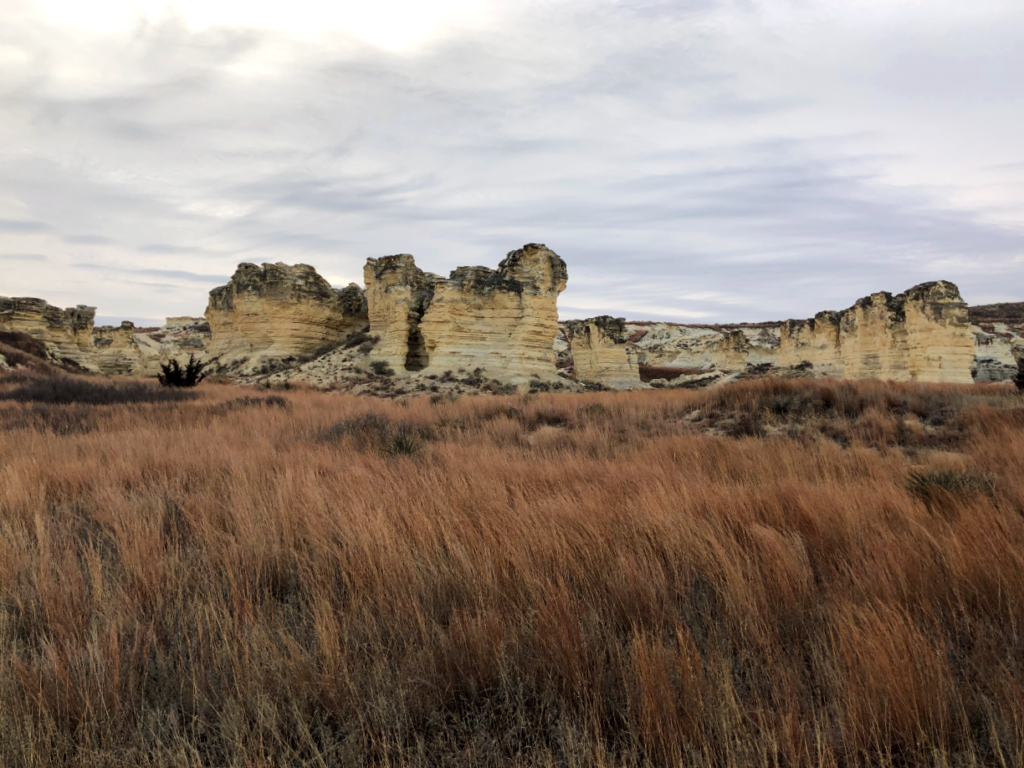
Off-roading
The real challenge of the day came trying to get OUT out of this area. The “road” (I use that term loosely) climbs a steep hill, and it is full of ruts that are DEEP! I am talking 18-24 inches in some places! At one point, I just stopped driving because I was convinced that if I went any further the Jeep was just going to tip over on its side. The road was that slanted! My sister thought we might roll as well, which is why she stopped videoing haha (yes I can laugh about it now)!
We had passed a fork in the road that looked a lot steeper but a little smoother, however, the GPS said to keep going straight so that is what we did. I followed the other tire tracks in the dirt hoping for the best route. The “road” was super narrow and it was like we were driving in a ditch. A ditch full of bumps and ruts. I really question whether it was a “road” or just a wash from erosion that people started driving in!
So while we were stopped I weighed my options, back all the way down the hill and leave the way we came in – not an option – there was no way I could navigate the craziness we had already driven through in reverse! Next.
Back up to the fork and take it – still required me to navigate bumps and ruts in reverse, and the fork was even steeper – not an option. Next.
Keep going and hope to God we don’t roll, we were sitting at pretty close to a 45 degree angle – not an option. Next.
Straddle it – cut across the rut and up the opposite side that was REALLY uneven so that we were basically driving on the sides of the ditch with one side being super bumpy, but at least we wouldn’t be driving at a 45 degree angle. Done. And we survived. (But it was nerve racking!)
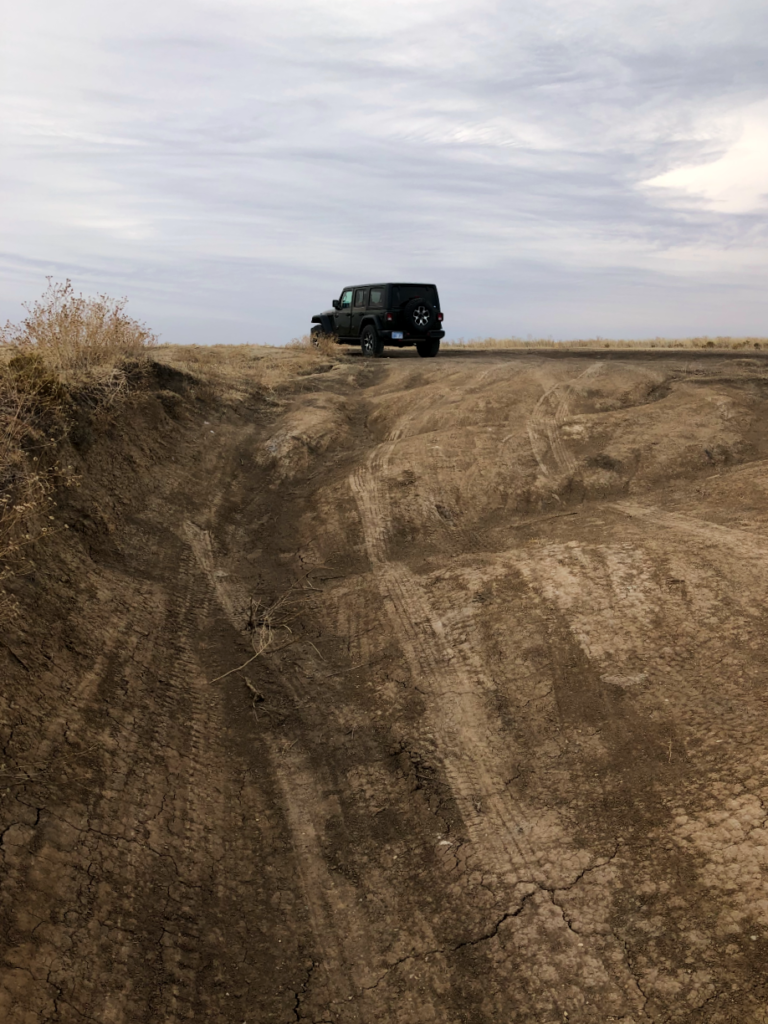
Once we made it out from the badlands at Castle Rock, the rest of the dirt and gravel roads were nothing! And we literally took gravel roads all the way to the I-70 on ramp – no joke! We made it back to the interstate before dark, which was my goal. We got back to the hotel in Hays to find that our door had been “fixed” so all we had to do was pull up on it to get it to latch, and pull down on it to get it open. Umm, OK.
Sternberg Museum of Natural History
Sunday morning we got up late – neither of us are morning people. Our first stop was the Sternberg Natural History Museum in Hays. This museum also housed thousands of fossils including two highly unusual finds: a complete Mosasaur fossilized skeleton, and a “Fish within a Fish” fossil – a Gillicus fossil inside of a Xiphactinus fossil.
You can see a plesiosaur, niobrarasaurus, Pteranodon, deinonychus, mammoth, and sabre tooth tiger there to name a few. They also have an expansive collection of rocks and minerals, a live rattlesnake display, and an animatronic dinosaur display that includes an angry t-rex.
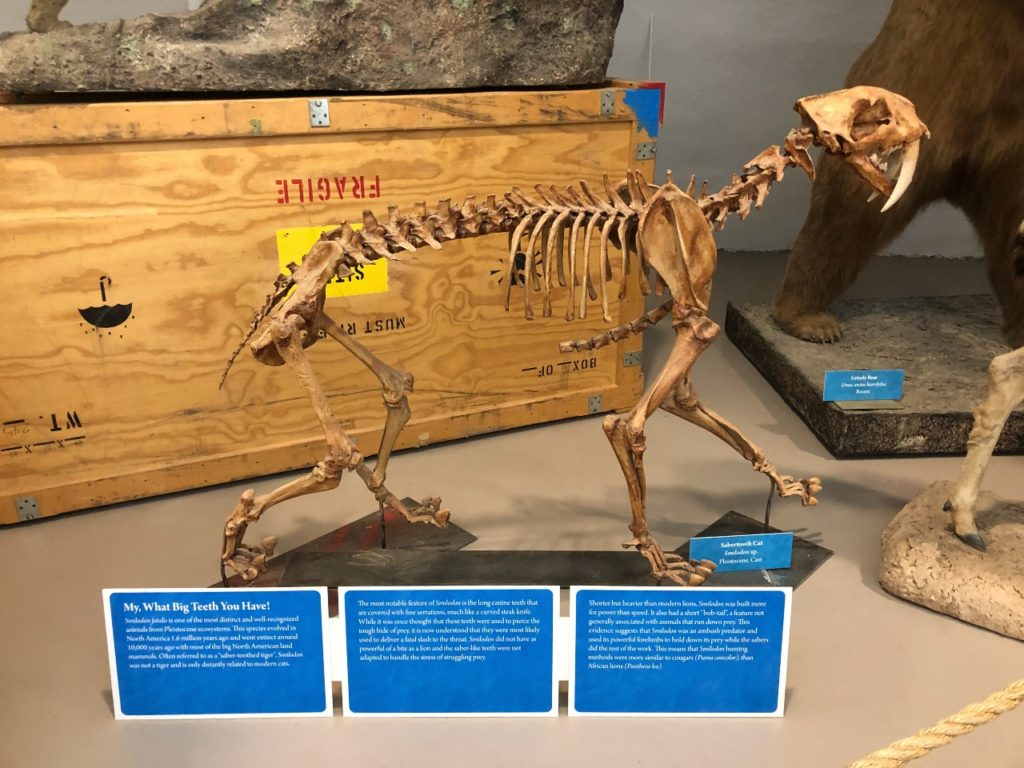
Nicodemus, Kansas
Our second and final stop of the day was the one I was looking forward to the most, the town of Nicodemus, a National Historic Site! Nicodemus is about an hour drive northwest of Hays. From Hays, you take Highway 183 north and then head west on 24 Highway. Although not much of the original town is left standing, only five buildings to be exact, it has quite an interesting history!
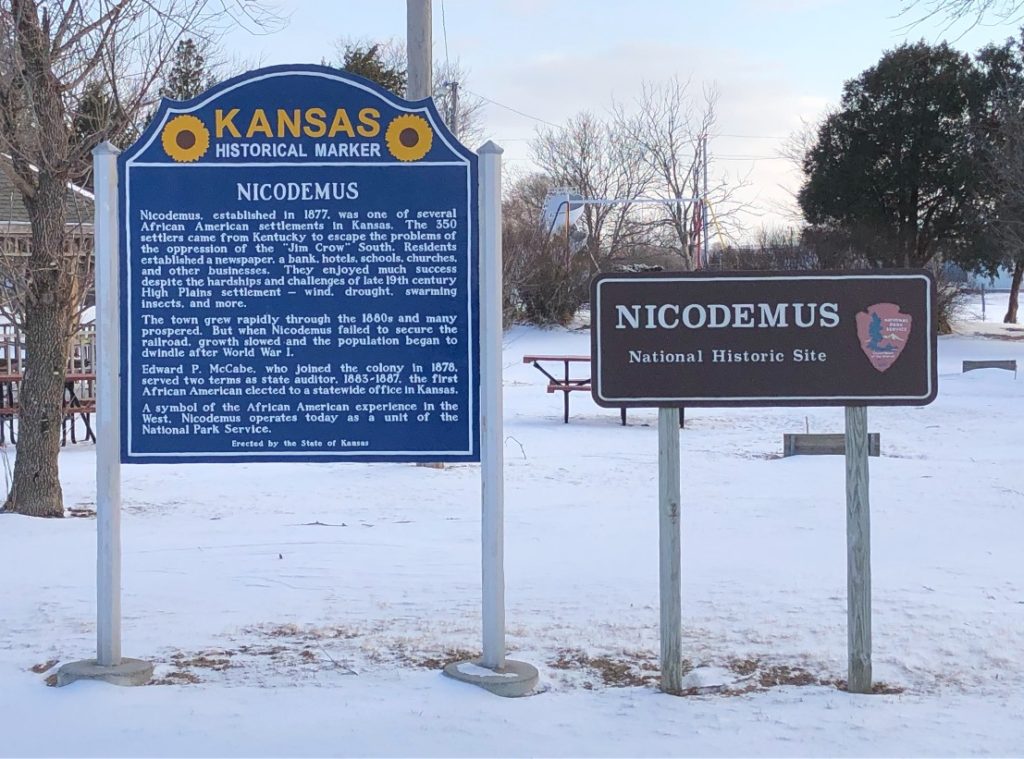
Nicodemas was established in 1877 with around 300 settlers, and according to the National Park Service, “was the first western town built by and for black settlers.” The town was named after the first African American to purchase his freedom in the United States.
Many settlers came as part of the Exodus of 1879, which was a mass migration of African Americans out of the south as segregation and violent attacks became the norm. This analogy (The Exodus) implied western states to be the promised land, and Kansas in particular as it had so vehemently fought against slavery even before the Civil War began. In fact, over 300 black communities were established in Kansas alone.
The first settlers in Nicodemus lived in “dugouts” or “sod houses” which were exactly what they sound like, homes dug out of the ground or a hillside with sod block walls. Think of it like a pioneer version of an earth contact home. Eventually wooden and limestone structures were built as residences. In its heyday, the town had its own general stores, hotels, boarding stables, newspapers, a bank, a doctor, a real estate office, a pharmacy, and many other local businesses. However, when the railroad was routed south of Nicodemus in 1888, businesses began to decline.
Nicodemus is significant in that it is the only one of the black communities established during the Reconstruction Era west of the Mississippi River that still exists as a town, albeit a very small one. Population statistics range between 11 and 25 people. The population of Nicodemus began to decline after World War I and with the Great Depression and the Dust Bowl. That being said, every year since 1878 (2020 was virtual), the town has held an Emancipation Celebration, more recently referred to as Homecoming, on the last weekend in July, which draws hundreds of people to the town.
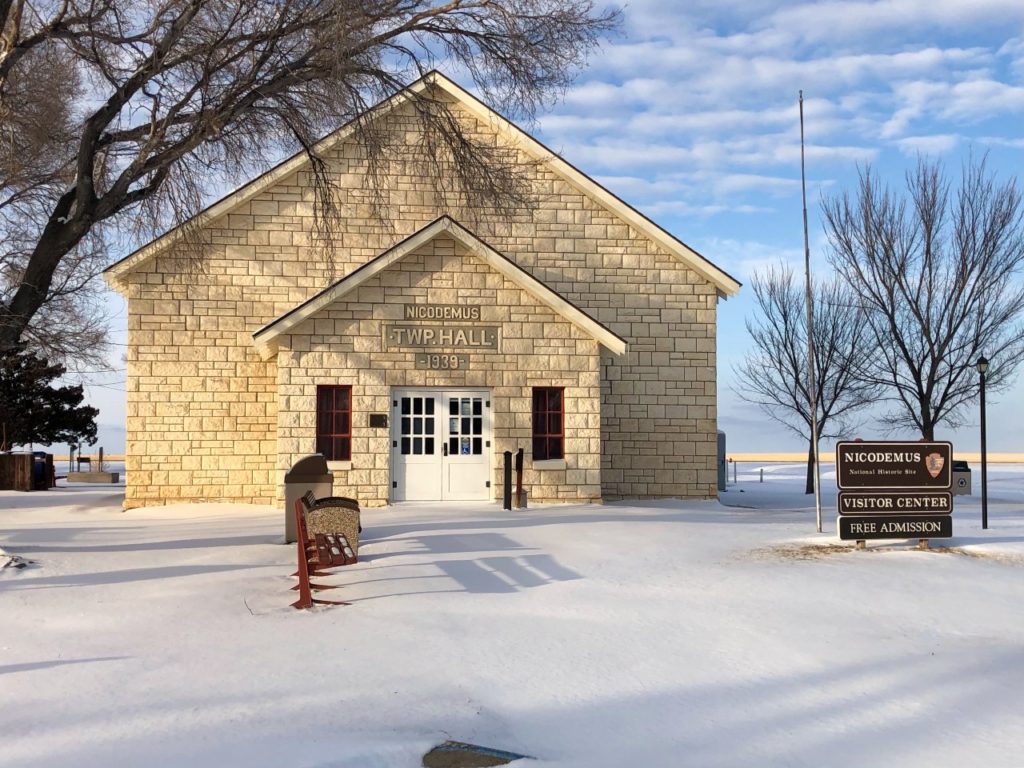
Nicodemus, was designated a National Landmark in 1976 and upgraded to a National Historic Site in 1996. The five original buildings that remain in order from newest to oldest include the Township Hall, the District Number 1 School, the A.M.E Church, the Old First Baptist Church, and the St. Francis Hotel. The Township Hall was built in 1939 as a WPA (Works Progress Administration) project, and it is the current Visitor Center. Unfortunately we were unable to go inside thanks to Covid.
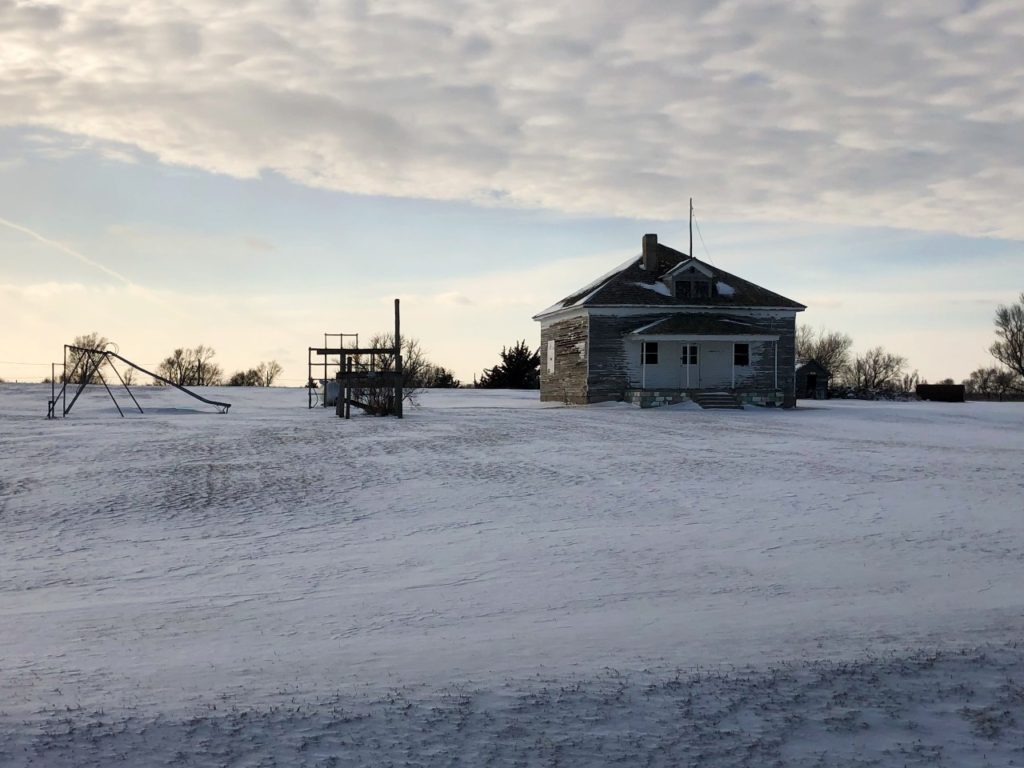
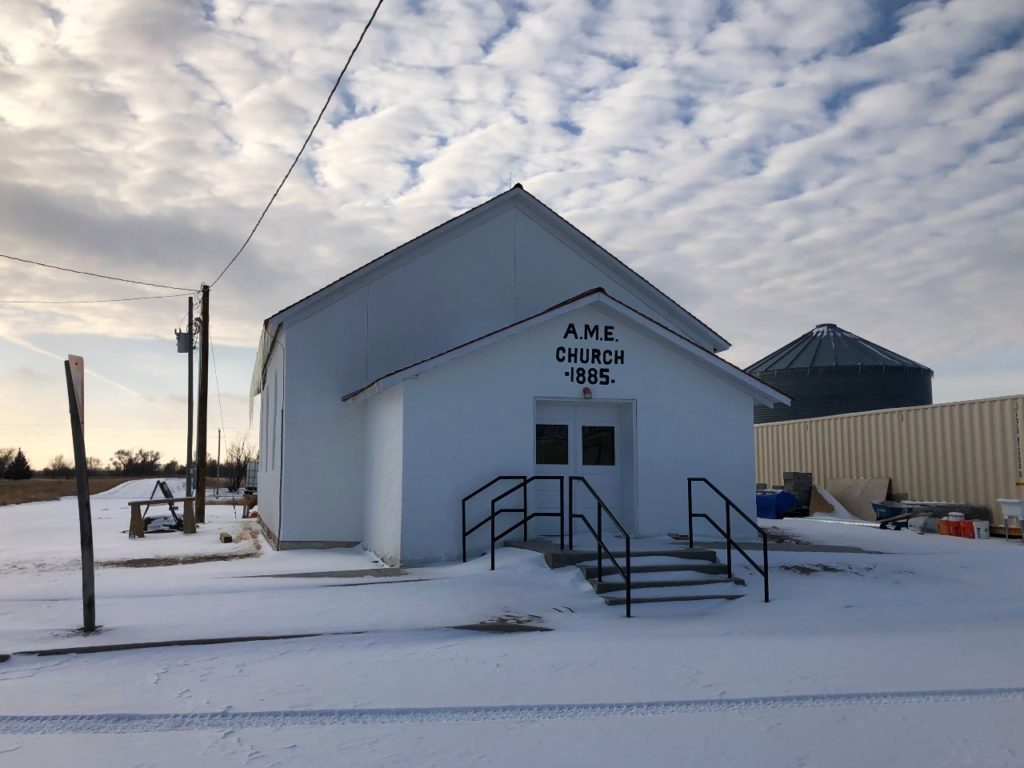
The District No. 1 School was built in 1918. It was built on the same site as the original school building that was constructed in 1878. It was the first school in Graham County. The A.M.E. (African Methodist Episcopal) Church was established by Reverend Jerry Meyers in 1879. They initially met in a dugout and later at the First Baptist Church. They built their own church in 1885, the date that is reflected above the door of the current building, which was purchased from another church after their original building burned down.
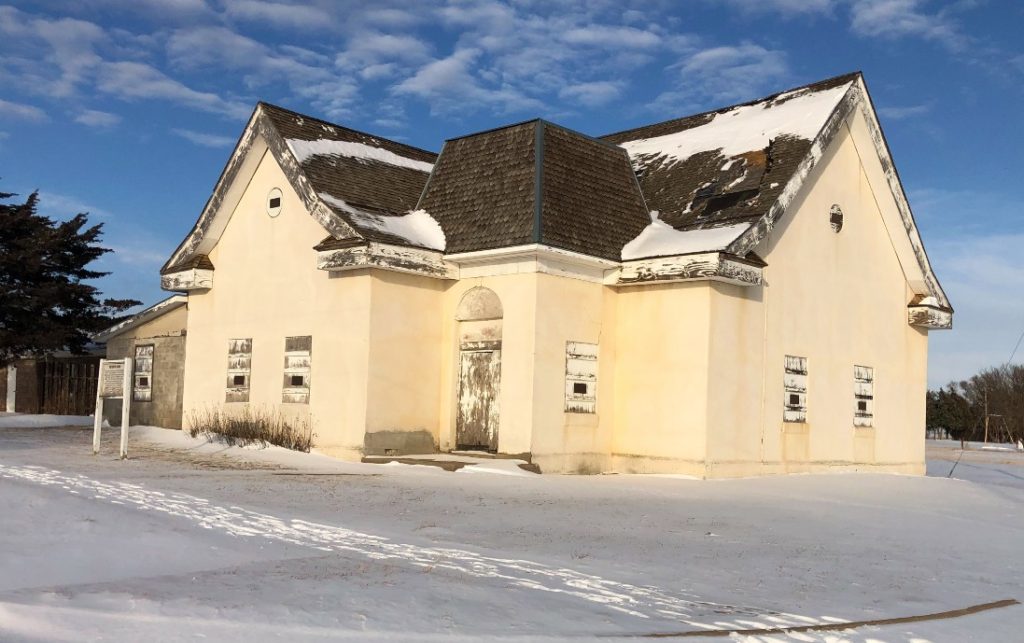
The Old First Baptist Church seen today was built in 1907. The First Baptist Church was organized by Reverend Silas Lee and they too first met in a dugout. They later upgraded to a sod structure on the current lot before a limestone structure was built in 1880. The “new” church was built around the 1880 building.
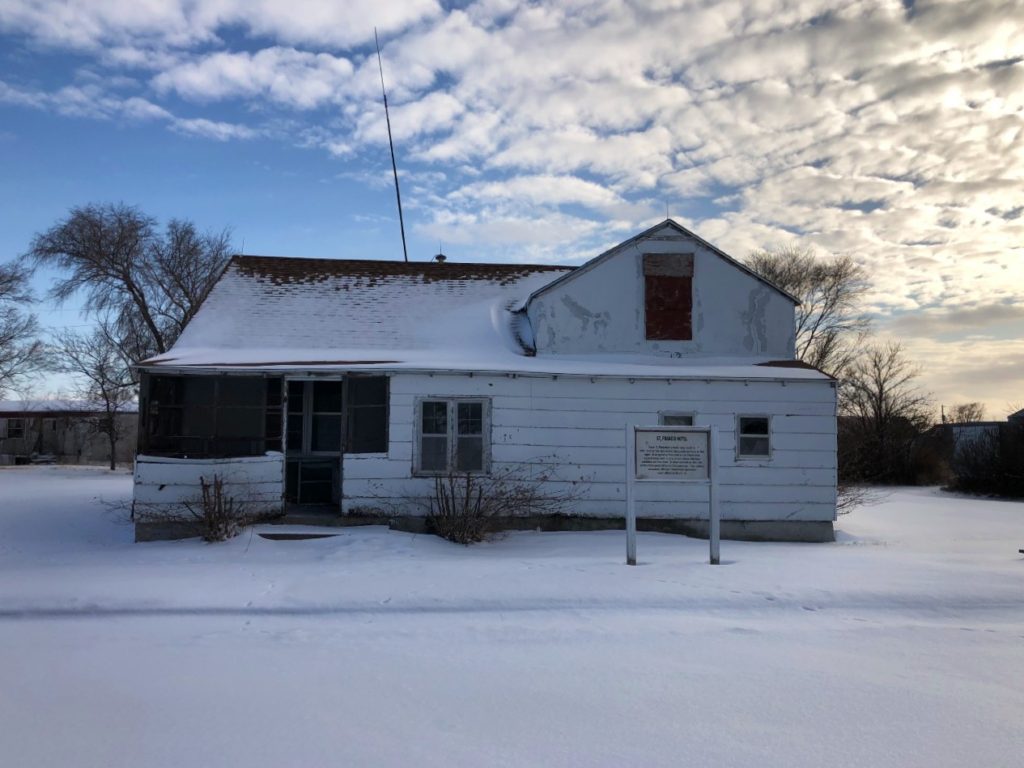
The St. Francis Hotel was built and owned by Zachary Fletcher (a Civil War veteran) and his wife. The St. Francis was the first business to open in the town. Mail was also delivered here, and Fletcher served as the postmaster. Fun fact, Nicodemus is the second oldest post office in the United States to have a black postmaster.
I thoroughly enjoyed the driving tour around the town to see these old buildings. It is actually designed to be a walking tour, but since it was -8 and the “feels like” was -24, we drove! I jumped out of the car long enough to get pictures of the buildings and the placards describing each one, and got right back in!
Fort Hays & Home
Our last day before driving home, we planned one more quick stop at Fort Hays State Historic Site. It was, of course, closed – not sure if due to Covid or the weather at this point haha, but I got out and took some photos nonetheless. Named after General Alexander Hays, who was killed during the Battle of Wilderness in the Civil War, Fort Hays was built in 1867 to protect Union Pacific Railway workers from Native American tribes in the area.
The Fort quickly became a supply post for other forts south and west with no access to the railroad. Fort Hays was not a walled fort, but was designed more like a small town. The fort closed in 1889, but there are several outbuildings still on the site including the limestone hexagonal blockhouse.
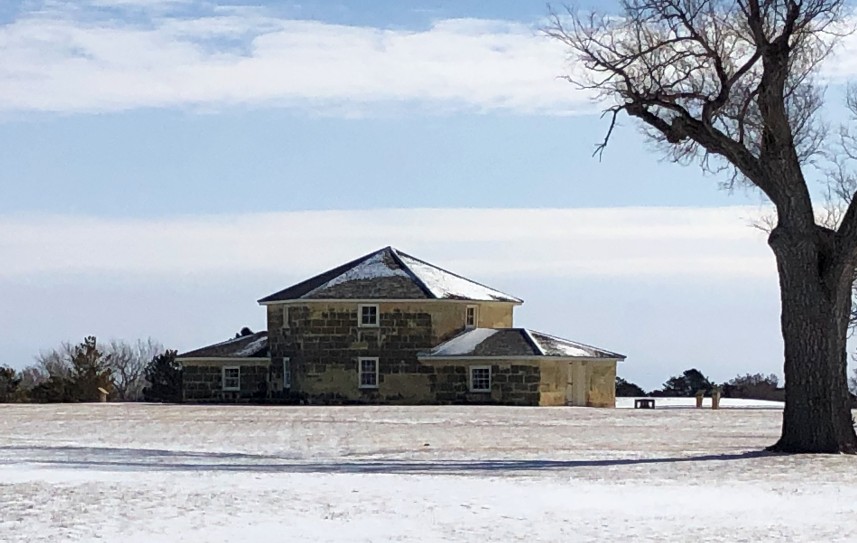
Fort Hays in its prime was graced by the likes of Lieutenant Colonel George Custer, “Buffalo Bill” Cody, and “Wild Bill” Hickock. Fort Hays also housed the 10th U.S. Cavalry, the African American regiment known as “The Buffalo Soldiers.”
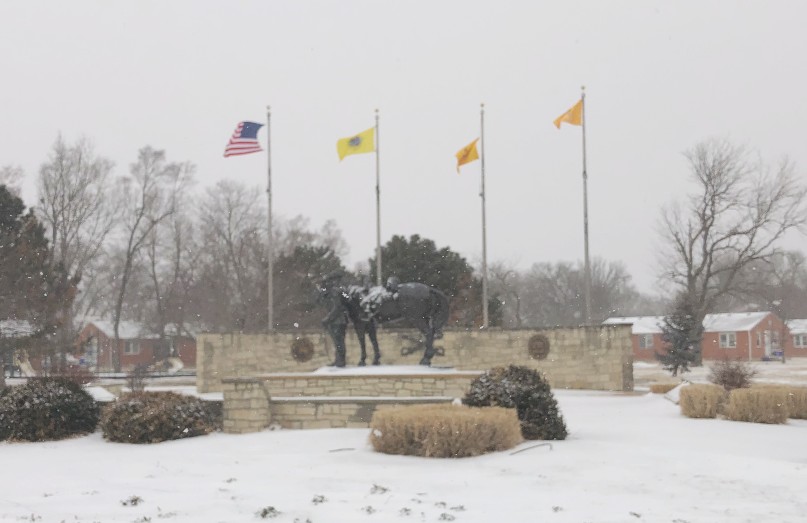
(excuse the blurry photo – I blame the snow LOL)
True to form, the drive home was exciting as we spent all but the first hour in a snowstorm. We did make one more stop in Junction City to see their Buffalo Soldier Memorial. We got gas and ate lunch there as well, and then got back on the road making it home just in time to get the rental returned on time!
As always, if you enjoyed what you read, you can subscribe to be updated when new posts are published. You are also invited to join our new community on Facebook: Tours, Trips & Travel Tips for History Lovers | by Travel the World History.
I am very excited to now offer you several ways to enjoy traveling yourself! If you enjoy planning your own travel, feel free to register and use my booking engine. If you are interested in a vacation quote, you can submit your request using this form. And lastly, if you are curious about how I have turned my passion for travel into an income, please reach out here! Thanks for reading! And here’s to hoping we are all traveling safely again soon! Things are beginning to look up!


